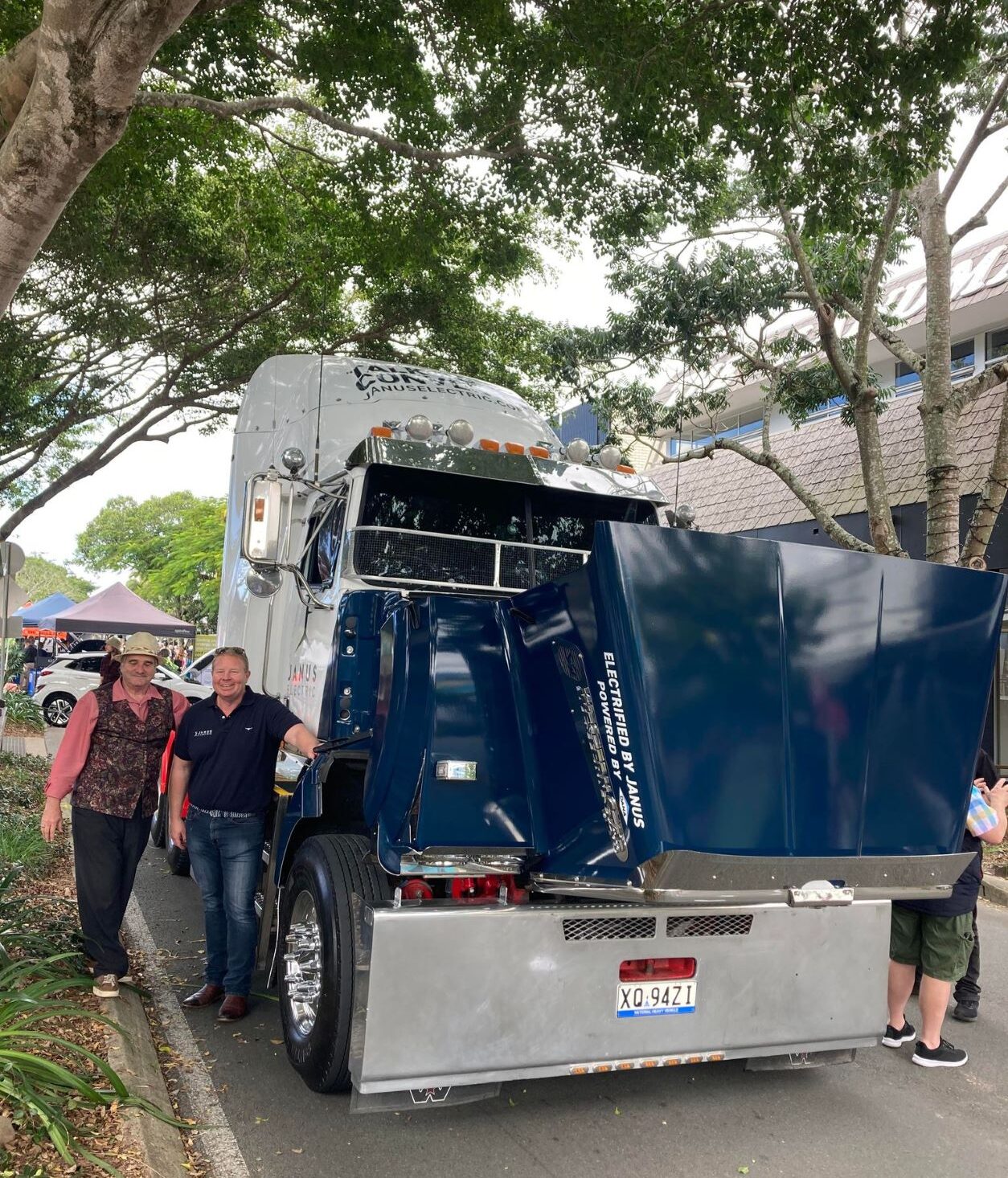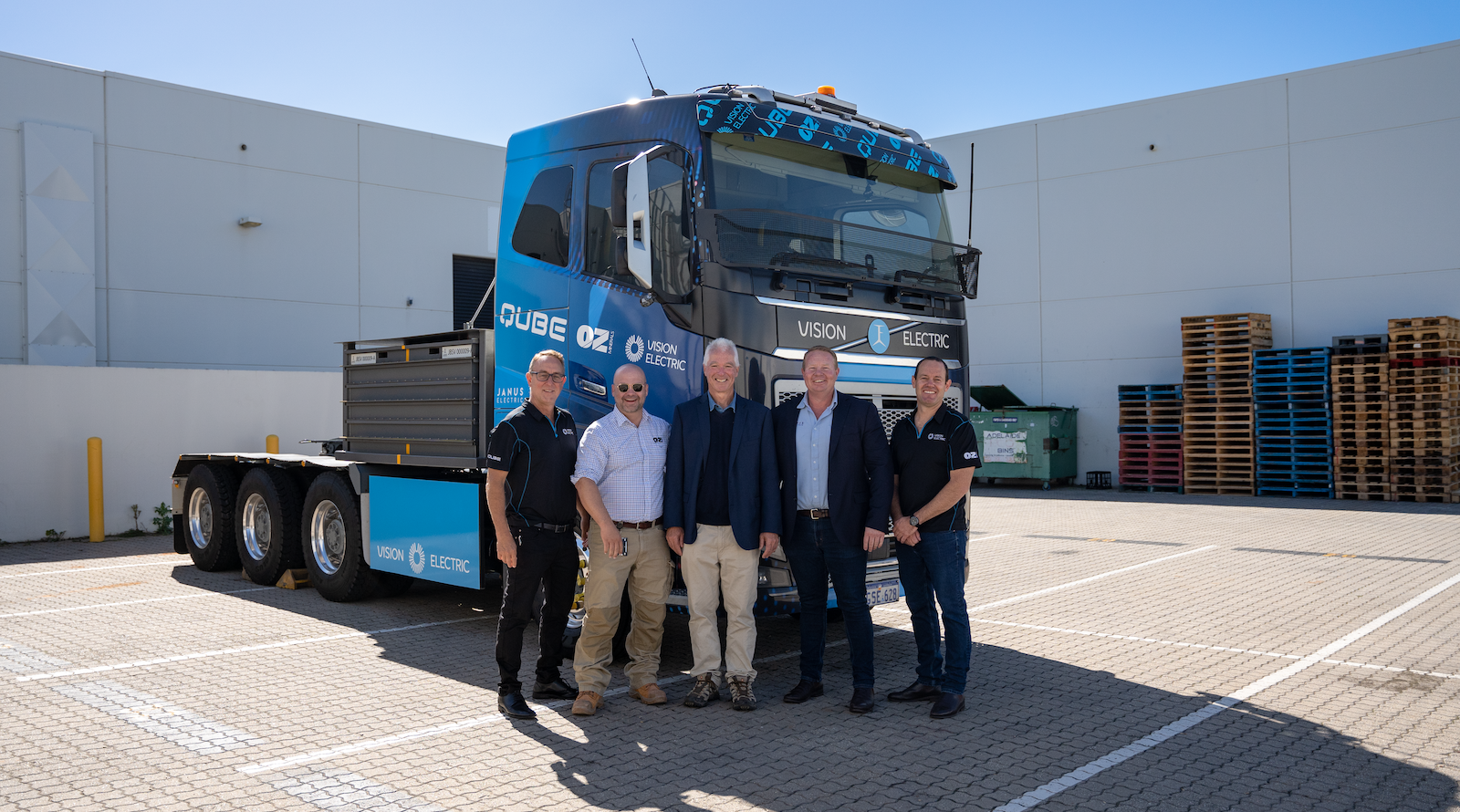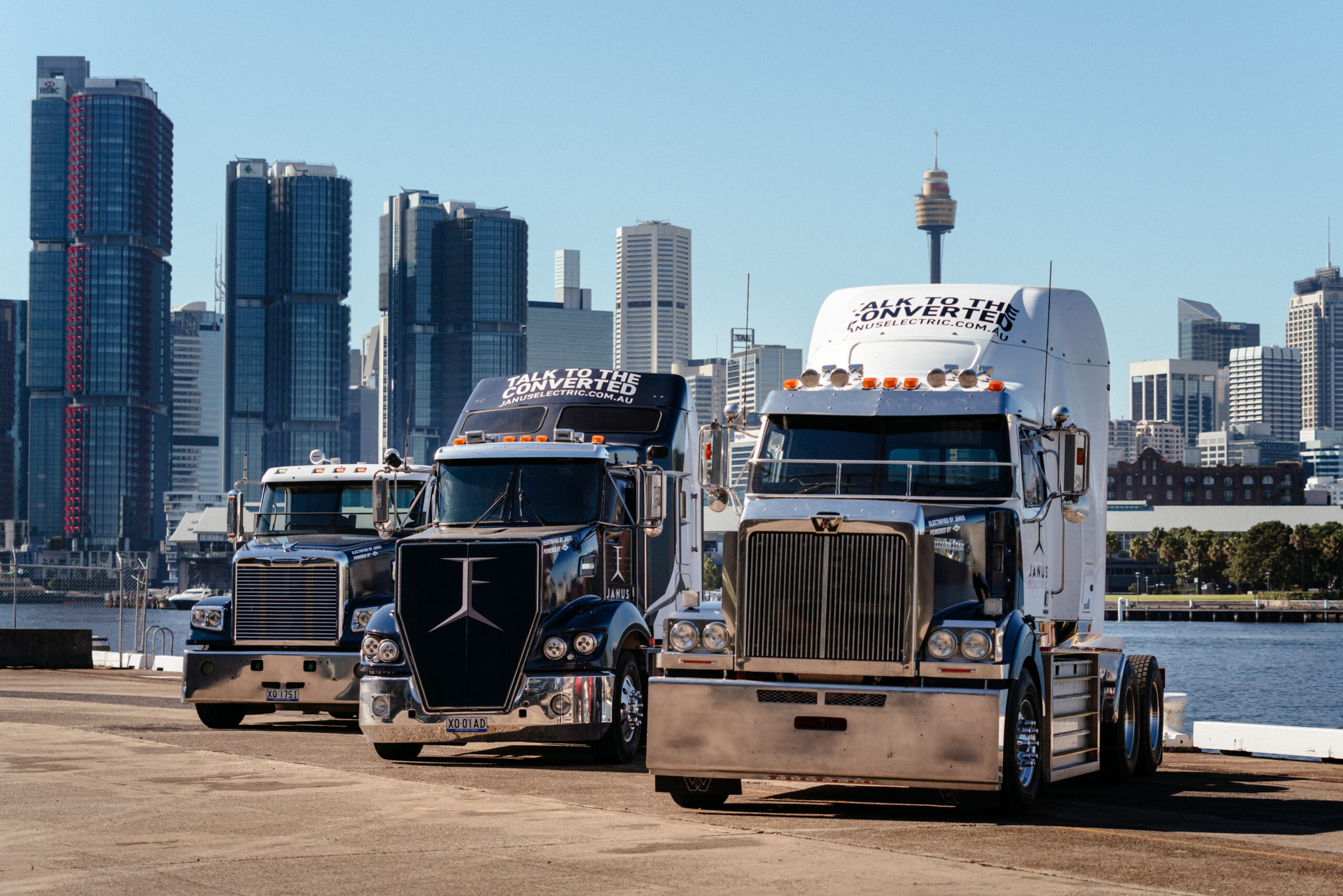
Sign up for daily news updates from CleanTechnica on email. Or follow us on Google News!
CleanTechnica has been following the progress of Janus Electric truck conversions for over three years.

The innovative tech trucking company has just announced the launch of the first completed solar-powered “Intermodal Charge & Change Station” at the Moorebank Intermodal Precinct in Western Sydney, New South Wales, Australia.
In about 4 minutes (less time than it takes a truckie to visit the loo), the facility will swap the 2-metre-by-1.2-metre depleted truck batteries for batteries full of sunshiney goodness, ready for the next 400 km of their run up the coast. It takes much less time than filling up the huge diesel tanks normally fitted to these rigs. Janus has strategically located battery swap stations along major highways to keep the trucks on the move. Want to see the battery swap in action? Watch the video here. It’s great to see Lex driving the forklift. When I last talked with Lex, he was planning to build a robotic battery swapping station. Hopefully that is still on the cards in the future.
It has been a long haul for Janus Electric, but now the company is making great progress. The statistics listed on its website are impressive — so far, 23 trucks have been converted, there are another 155 confirmed orders, 2051 battery swaps have been completed, almost 300,000 km have been driven, 550,000 kWh of energy have been used, and 9 charge and change stations have been deployed. A measure of their success is that they are advertising positions for diesel mechanics. Job security for years to come. Well done, Janus.

The Charge & Change system will also aid in balancing the grid. Solar charging of batteries in the middle of the day will reduce the “duck curve,” offering “utility providers and governments significant return on green technology infrastructure.” Electricity flows from grid to battery, battery to battery, and battery to grid. The time may come when Janus can offer firming as a service.
By converting existing diesel trucks to electric, Janus can extend the life of the truck and reduce capital expenditure. Operators would have to look at a case-by-case scenario and put their bean counters to work — what would be the return on investment when taking into account replacement vs. refurbishment of the old motor, the cost of diesel vs. electricity, etc.? I think that the electric option would win out in most cases.
Then there is the issue of energy security. Australia uses 32 billion litres of diesel per year. One quarter of that goes into trucking. 100% is imported. In this ever more turbulent world, homegrown sunshine sounds like a better option. Not to mention better for everyone’s health. Diesel starts with “die.”
The recently launched Moorebank Intermodal Precinct is the first facility of its kind to be built where freight is swapped between road and rail. The New South Wales government has introduced a “Towards Net Zero Policy” aimed at reducing the carbon footprint of heavy vehicles and rail freight. Mass provisions on state roads have been increased, which means that electric trucks like those from Janus Electric can be used without reducing cargo quantities.

Most Australians live on the eastern seaboard of the country. The majority of freight movement is along the highways that link Melbourne in Victoria to Sydney in NSW and Brisbane in Queensland. That makes it an ideal route to electrify. Although use cases for diesel will persist for the less travelled inland routes, the main highways are ideal for conversion to battery electric.
Government modelling for New South Wales alone shows freight transport and logistics contributed an estimated $AU 74.3 billion to NSW GDP in 2022–2023, with the sector predicted to grow to an estimated $AU 131.5 billion by 2060–2061. “The freight transport and logistics sector provide more than 330,000 full time jobs, a number which could grow as high as 565,000 by 2060–61. As the freight sector continues to grow, the NSW Government will keep working with industry to ensure it embraces new technology to continue growing sustainably.”
Janus Electric CEO Lex Forsyth said: “Launching this solar-powered Charge and Change Station is a crucial step towards a cleaner, greener future for Australia’s transport sector. Janus Electric is at the forefront of electric vehicle innovation in Australia, offering cutting-edge solutions to help reduce carbon emissions in the heavy transport industry. Our Charge and Change Stations enable quick battery swaps for electric trucks, providing a convenient and eco-friendly alternative to traditional refuelling methods.”
On a side note, Australia, specifically, Queensland, is trialling a hydrogen-powered semi. “Pure Hydrogen has successfully registered Australia’s first hydrogen fuel cell prime mover in Queensland, with the truck to be handed over in coming weeks. Formal registration of the Taurus hydrogen powered prime mover follows an extensive testing program to meet with domestic regulations. The 6×4 Taurus prime mover was first unveiled in Australia in September 2022, with Pure Hydrogen to deliver refuelling along with maintenance and repair services. It’s taken a long time to get the truck on the road, but with the vehicle now formally registered, a trial is about to commence, running for approximately six months. After over 12 months of rigorous vehicle testing, Pure Hydrogen has successfully completed the homologation and road approval process for its trial.”
On the issue of hydrogen refuelling (Australia only has four hydrogen refuelling stations), Pure Hydrogen plans to build an East Coast Hydrogen Super Highway. If it comes to pass, this will be Australia’s first network of hydrogen production facilities. Just to confuse matters on the spectrum of hydrogen colours, they have introduced even more. Adding to green hydrogen, they are now calling two of their proposed products Emerald and Turquoise. Green, we understand. It appears that emerald hydrogen is produced using methane from biomass, and turquoise uses minimal methane.
In an innovative move, “Pure Hydrogen is working with its partners to develop mobile refuelling options which it will use to service private and public enterprises across the world.” See the video of the launch of the prime mover here. Sadly, I expect that this trial may be as successful as others overseas and not be able to compete with battery electric. We will see.
Australia has a few electric prime movers available now. CleanTechnica has reported on them here and here. Janus Electric, with its use of battery swap stations and refurbishment of existing trucks, may prove to be a better option than a new electric truck. Transport companies will have choice and will have to sharpen their pencils as they make decisions towards a brighter, electric future.

Chip in a few dollars a month to help support independent cleantech coverage that helps to accelerate the cleantech revolution!
Have a tip for CleanTechnica? Want to advertise? Want to suggest a guest for our CleanTech Talk podcast? Contact us here.
Sign up for our daily newsletter for 15 new cleantech stories a day. Or sign up for our weekly one if daily is too frequent.
CleanTechnica uses affiliate links. See our policy here.
CleanTechnica’s Comment Policy




